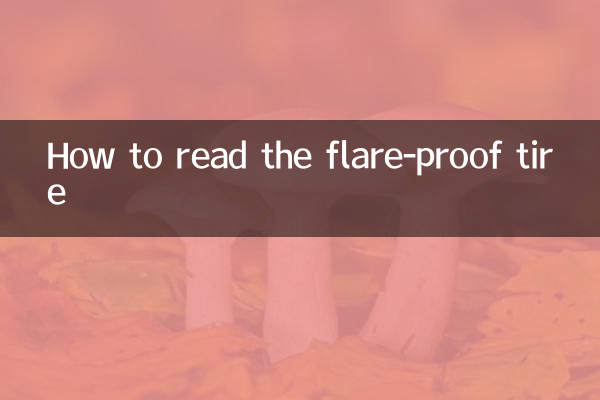How do you think about the explosion-proof tire? Comprehensive analysis of purchasing and use skills
With the improvement of car safety awareness, Run-Flat Tire has gradually become the focus of car owners' attention. But in the face of many brands and models on the market, how to judge the advantages and disadvantages of explosion-proof tires? This article will be fromDefinition, advantages and disadvantages, key points of purchase, price comparison of popular brandsetc., providing you with structured data and analysis.
Explosion-proof tires are not completely "explosion-proof", but rather, after the tire leaks or tires, it can still travel at a certain distance (about 50-80 kilometers) at a lower speed (usually below 80km/h) to avoid high-speed loss. Its core technology lies inReinforced tire wall design, even if the pressure is lost, it can support the weight of the car body.

| advantage | shortcoming |
|---|---|
| Can still drive for short distances after a tire blowout | Price 30%-50% higher than ordinary tires |
| No need to carry a spare tire, reducing the weight of the car | Hard tire wall, slightly poor comfort |
| Improve emergency safety | Maintenance is difficult, and some damage needs to be replaced directly |
1.Brand and technology: Priority is given to major factories such as Michelin, Bridgestone, Continental, and their explosion-proof technology is more mature.
2.Size Match: It must be exactly the same as the original tire specifications (such as 215/55 R17).
3.Speed level: Explosion-proof tires are usually marked "RSC" (Run-Flat System Component), and the maximum supported vehicle speed must be confirmed.
4.Wear resistance index: The higher the Treadwear value (such as 400), the longer the life span.
| brand | model | Size example | Reference price (yuan/item) |
|---|---|---|---|
| Michelin | Primacy 3 ZP | 225/45 R18 | 1500-1800 |
| Bridgestone | DriveGuard | 205/55 R16 | 900-1200 |
| Horse card | ContiSeal | 235/50 R19 | 1300-1600 |
| Pirelli | Cinturato P7 RFT | 245/40 R20 | 1700-2000 |
1.Tire pressure monitoring is essential: The explosion-proof tire is sensitive to tire pressure, and it is recommended to install a real-time monitoring system (TPMS).
2.Avoid speeding: After the pressure is lost, the vehicle speed must be strictly limited, otherwise the wheel hub may be damaged.
3.Regular inspection of the tire wall: Reinforced tire walls are prone to accumulation and damage, and they need to be inspected every 5,000 kilometers.
4.Replacement cycle: Even if the wear is not obvious, it is recommended to replace it for 5 years or 60,000 kilometers.
Q: Can the explosion-proof tire be replenished?
A: Only if the tread nail is tied and the hole diameter is less than 6mm, the sidewall damage cannot be repaired.
Q: Can ordinary cars install explosion-proof tires?
A: It is necessary to confirm whether the wheel hub supports (requires "EH2" or "J" type rims). It is recommended to consult a professional store.
Summarize: Explosion-proof tires are an effective choice to improve driving safety, but price and comfort need to be weighed. Through this article’s structured data and analysis, I hope it will help you make smarter decisions.

check the details

check the details